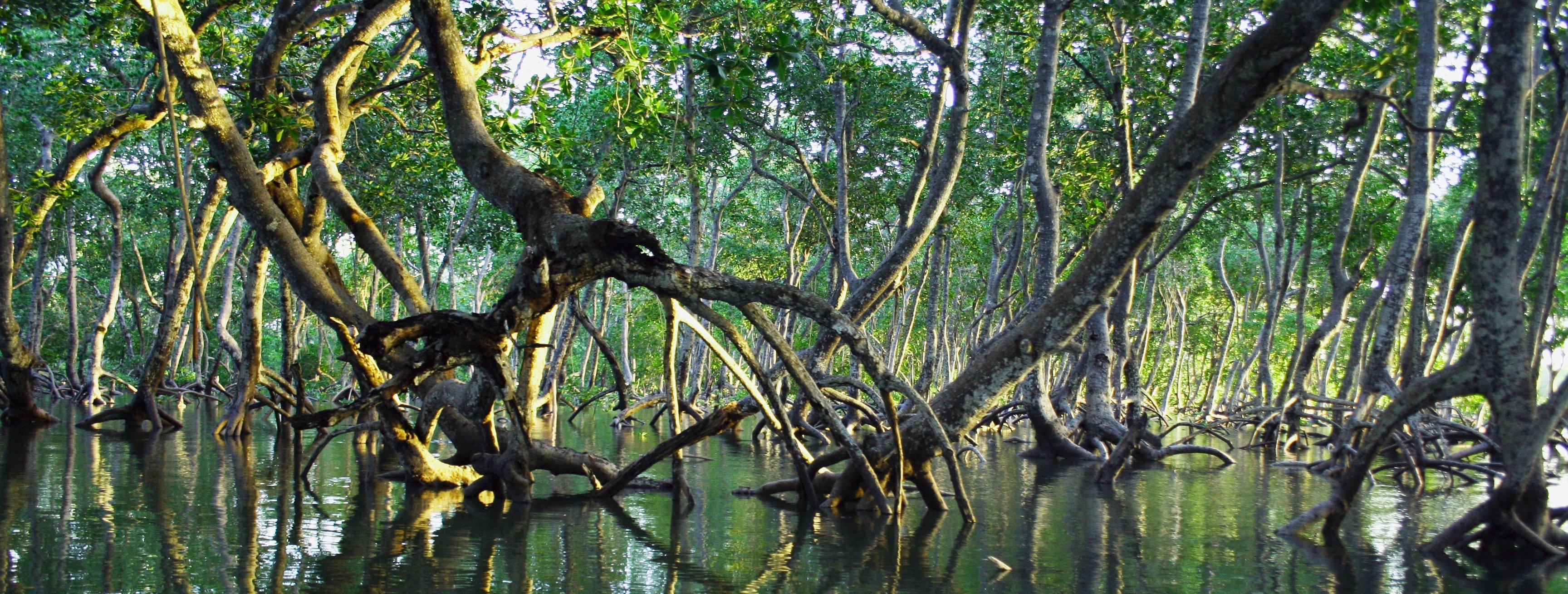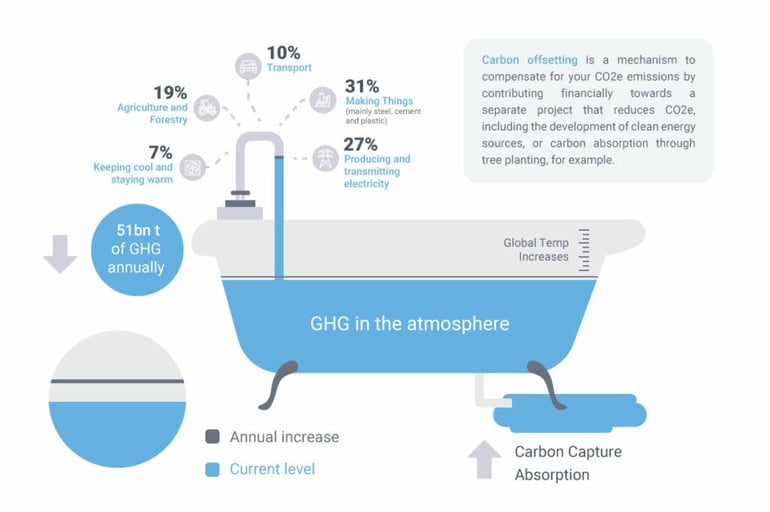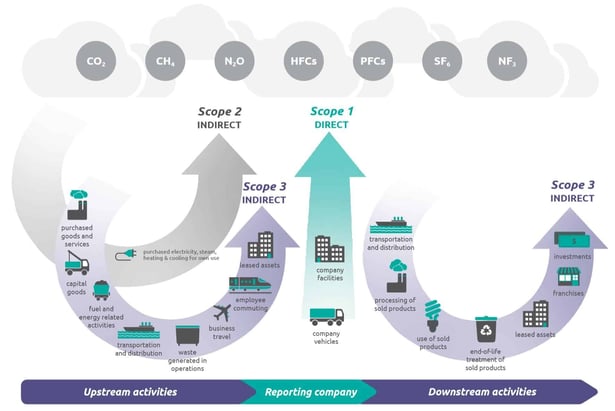As a business, we know we can — and believe we must — leverage our resources to advance sustainable practices and reduce our carbon footprint. Here, we’ll share our sustainability journey as a scaling software company to provide context for readers looking to begin their own in this uncharted territory.
Thanks to this article, you’ll understand how carbon reduction compares to carbon removals, what they both aim to achieve, and why engaging with both are crucial. We’ll also delve into why we decided to partner with Tenaka to invest in blue carbon removal solutions.

1. Measure Your Emissions to Set an (Honest) Baseline
Publishing the first Dataiku Environmental Report in 2019 marked the first step of our formal pledge to yoke success with sustainability. This initial study set the baseline for where Dataiku’s sustainability was at, essential for our improvement roadmap.
The 2020 global pandemic compounded with continued climate deregulation reinforced our resolve to play our part in mitigating the climate crisis. However, disruptions in international flights tampered with the objectives we had set for ourselves, and accordingly, our 2020 Dataiku Environmental Report showed a 36% net decrease of our carbon footprint — we did not take any credit for this given that it resulted from imposed grounding of global flights rather than an explicit change in our travel policy.
This disruption did, on the other hand, give us the time and space to take a step back on our sustainability strategy, reflect on our mission, focus on improving our footprint’s measurement, and identify how best to contribute to the climate crisis’ mitigation.
2. Reduce Your Emissions
The international scientific community calls for the reduction of greenhouse gas (GHG) emissions down to net zero. This aims to limit global warming to 1.5C° compared to pre-industrial levels, in line with the 2015 Paris Agreements (visit for a one and a half minute video).
When researching the matter of GHG emission reduction, it is easy to be confused by the terminology. Is carbon reduction different from carbon removal? Same-same, but different? In a nutshell: different, and complementary. Let’s introduce the bathtub analogy to explain why carbon reduction and removal are equally necessary.
Our atmosphere is a bathtub filled with water (GHG emissions), the level of which has reached a degree that causes human health hazards and aggravates the destructiveness of extreme weather events (droughts, floods, heatwaves, etc.), burdening our society with costly socio-economic and environmental damage. To reduce the harm for people and the planet, we need to reduce the level of the water in the tub.
 Source: Envirovue All you need to know about net zero
Source: Envirovue All you need to know about net zero
Engaging in carbon removals aims to drain the bathtub with either nature-based (reforestation, restoring carbon sink, etc.) or tech-based (carbon-capture storage, etc.) solutions — more on these later. However, if one drains the tub whilst still pouring water into it, levels will stay the same. Reducing the flow of incoming water through the tap into the tub is therefore paramount.
Given the urgency we are in today, and the water accumulated from unbridled emissions over the past two centuries, we actually need to turn off the tap altogether. Namely, we need to reduce GHG emissions generated by our economic activity’s processes and operations.
Carbon reduction calls for a revision of the energy usage and resulting GHG emissions of each step of our product or service’s lifecycle. This includes upstream emissions linked to the supply chain amounting to the product or service’s production as well as downstream, i.e., resulting from its use by the end user and what it enables. We will expand on how carbon insetting translates to Dataiku’s circumstances in a later article.
 Source: The GHG Protocol
Source: The GHG Protocol
3. Remove Carbon to Become Neutral or Reach Net Zero
As for carbon removal, there are two ways of proceeding — either through nature-based solutions or with tech-based ones:
Tech-Based Solutions
Tech-based solutions refer to Carbon Capture Storage (CCS) and Direct Air Capture (DACCs). CCS is a process by which carbon is removed from the air and permanently stores it, usually underground. DACCs recycle air by purifying it — this method is subject to scientific controversy given that its current process re-releases CO2 for reuse in another form for alternative activities. Either way, both would require building energy-intensive infrastructure and are therefore not straightforwardly net-positive solutions.
Nature-Based Solutions
The alternative carbon removal strategy focuses on nature-based solutions by investing in restoring organic carbon sinks. These are environmental features that naturally sequester carbon by virtue of their metabolic functions. Namely, trees, soil, and marine ecosystems absorb CO2 to survive — they feed off it. Hence the recent obsession with planting vast surfaces of trees (afforestation), also known as green carbon (add an implicit “capture” here). Certain strands of “regenerative” agriculture study how crops could be optimized to enhance the amount of sequestered carbon by the soil.
Alternatively, marine ecosystems present similar (if not greater) functions. Indeed, the ocean generates 83% of the global carbon cycle (i.e., carbon captured or sequestered via natural processes), thanks notably to coastal and marine ecosystems (e.g., mangroves, seaweed, tidal marshes, kelp forests, etc.). The IUCN derived that though they cover only 2% of the ocean seafloor, they account for half of the total amount of carbon sequestered by the ocean, hence the appeal in investing in their restoration — namely, in blue carbon.
What’s more, restoring marine environments also translates to renewed resiliency. Renovating the natural ecosystem, prevents human harm thanks to the reinstallation of natural barriers to various weather events (e.g., tsunamis, coastal flooding, acidification, biodiversity collapse, loss of fishing stocks, and ensuing local nutritional strain).
4. Partnering With Tēnaka
Given all the options in step three, investing in blue carbon struck us as the most judicious solution given its exponential positive impact. But our biggest question from there was: where to begin? That’s where our journey with Tēnaka started.
Tēnaka is a social business that develops tailored solutions to help companies invest in scaled regeneration of marine ecosystems such as coral reefs and mangroves.Of all blue carbon habitats, mangroves are among the most efficient ones. According to the UNEP, a mangrove forest sequesters up to five times more CO2 on average than a terrestrial forest per unit area.
Yet Tēnaka is more than merely a mangrove restoration project — we were also drawn to their holistic approach to sustainability. By recognizing how inseparable meaningful environmental restoration is from social equity, we found our understandings of sustainability were aligned. Presently operating in Southeast Asia and expanding to the Indian Ocean and the Caribbean Sea, Tēnaka is committed to positively impacting the local economy by involving the community in each of its corporate carbon removal projects.
By investing in our “blue forest” (a 4.2-acre mangrove), 25 local scientists were hired and 625 students and volunteers were involved in the restoration project, which meant supporting 4,000 land and marine species. Thanks to its presence and projects, Tēnaka thus boosts local settlements, livelihoods and health, allowing us to link our carbon removal project with our commitment to advancing social justice.
Next Steps
As proud as we are to partner with Tēnaka, we appreciate that carbon removal investment can only be a piece of our carbon mitigation strategy: carbon reduction is essential. While we hope sharing our experience can help other companies achieve or kick off their sustainability goals, we’re well aware that our journey is far from flawless and care to humbly uphold our guiding stance — that perfection is the enemy of progress. Alongside Tēnaka's visionary and passionate team, we hope to contribute to constructive solutions for a healthier, fairer, more sustainable future.




